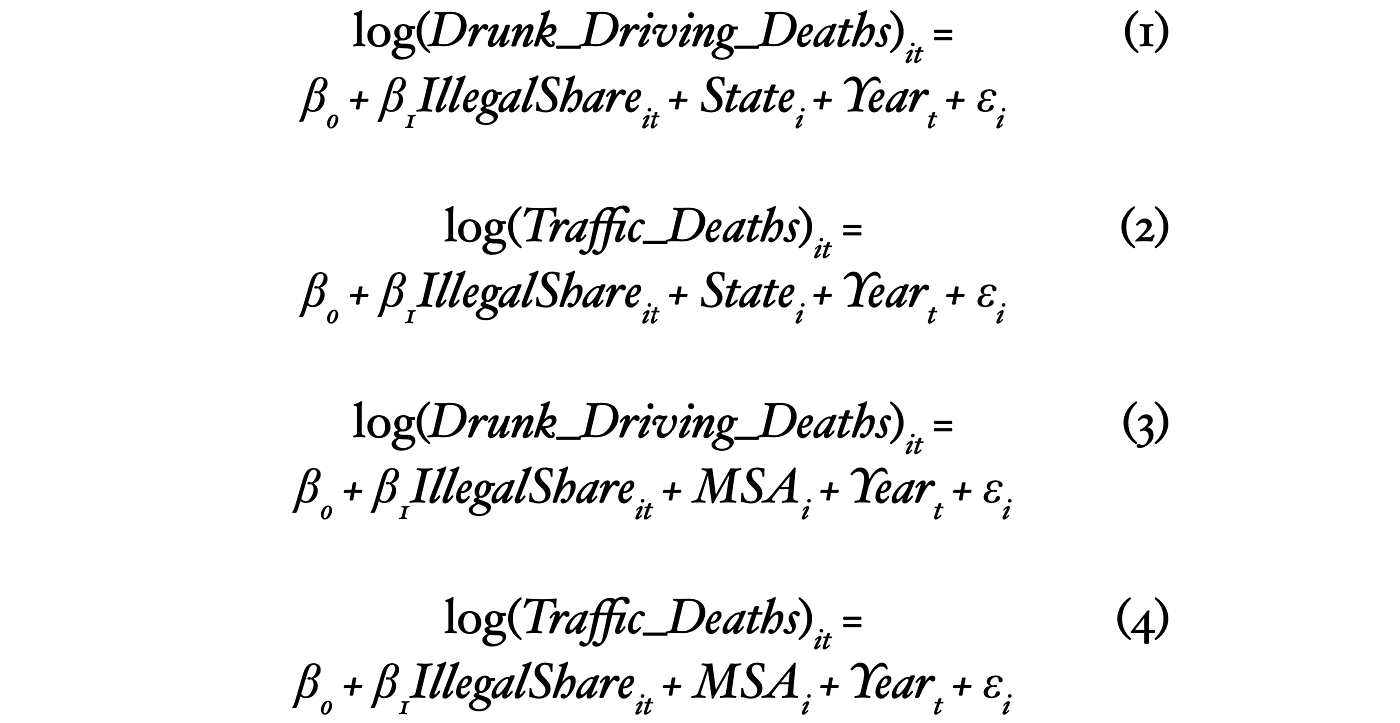The danger posed by illegal immigrant drunk drivers is a frequent justification for increases in interior immigration enforcement.1 Former Immigration and Customs Enforcement director Thomas Homan went so far as to label driving under the influence (DUI) and driving while intoxicated (DWI) offenses committed by illegal immigrants as a “public safety threat.”2 Indeed, law enforcement officials and immigration authorities alike continue to claim that illegal immigrants are significant DUI and DWI offenders.3
Occasional tragic crimes, such as the 2010 DUI-related felony murder of Benedictine nun Sister Denise Mosier and the 2018 death of Indianapolis Colts linebacker Edwin Jackson, both of whom were killed in car accidents caused by illegal immigrant drunk drivers, seem to justify those warnings.4 Meanwhile, the Biden administration has deprioritized deportations of illegal immigrants who are convicted of DUI and DWI offenses.5 But neither the occasional death caused by a drunk driving illegal immigrant nor statements by law enforcement officials show that illegal immigrants significantly contribute to drunk driving deaths.
Drunk driving poses a serious hazard to Americans. In 2019, more than 10,000 people were killed in alcohol-impaired-driving accidents, meaning that drunk driving was responsible for almost 28 percent of all traffic deaths.6 The National Highway Traffic Safety Administration estimates that in 2019 the absolute number of alcohol-related driving deaths was highest in Texas, California, and Florida—three states with large populations, including large illegal immigrant populations.7 However, the absolute number of drunk driving deaths in large states that also have large illegal immigrant populations is unimportant for this analysis. What is important is that if illegal immigrants are more likely to be drunk drivers, places with larger illegal immigrant shares of the population will have more alcohol-related traffic deaths, all else being equal. On a per capita basis, the states of Montana, Wyoming, and South Carolina had the highest rate of drunk driving deaths. Those three states have low illegal immigrant populations, equal to 0.5 percent, 1.1 percent, and 1.8 percent of their respective populations—well below the nationwide average of 3.5 percent.
There is little research on illegal immigrants and drunk driving. One of the few studies of impaired driving among illegal immigrants surveyed 467 recent Hispanic immigrants to Miami-Dade County, Florida.8 Of those 467 respondents, 67 were illegal immigrants. The study found that illegal immigrants drink more than legal immigrants and are less knowledgeable about DUI and DWI laws but that they are much less likely to be involved in DUIs and DWIs because they desire to avoid interactions with law enforcement officers. Another study focusing on DUI and DWI traffic stops near the U.S.-Mexico border found that binge drinking is more common along the border but that DUIs and DWIs are not more common in border counties.9 The most comprehensive nationwide study on the topic found that increased illegal immigration is associated with a decrease in DUI and DWI arrests and not significantly associated with drunk driving deaths.10 Lastly, Andrew Forrester and Alex Nowrasteh of the Cato Institute authored a blog post in 2019 that found no statistically significant relationship between illegal immigrant population shares at the state level and the rate of drunk driving deaths.11
Lower illegal immigrant drunk driving rates are especially surprising compared to the general finding that Hispanics in the United States generally have higher rates of DUI and DWI, which is a crime usually committed by poor people with low levels of education.12 Illegal immigrants are mostly Hispanic, and they tend to be poorer and less well educated than the other Hispanics or the population at large, so their lower likelihood of drunk driving is likely a result of greater deterrence; illegal immigrants face severe legal penalties from interactions with police officers, including deportation, that others do not.13
This brief extends Cato’s earlier research on drunk driving deaths to see how the illegal immigrant proportion of the population in the years 2010–2019 at the state and metropolitan statistical area (MSA) levels are related to drunk driving deaths in those localities. We find no statistically significant relationship between drunk driving and the share of the population who are illegal immigrants.



